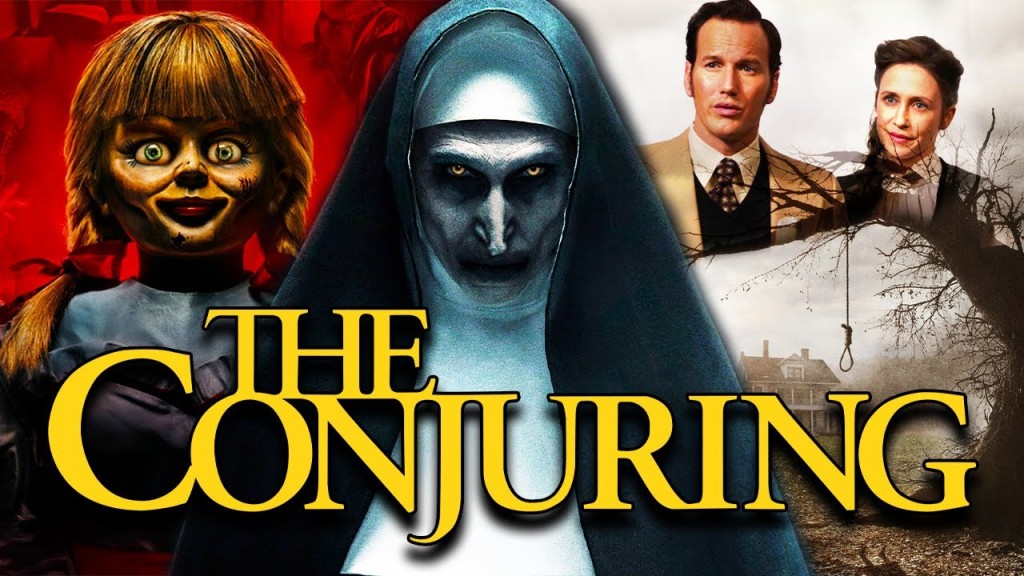
I just finished watching THE CONJURING series as it has been completed thus far, the most recent movie at this writing being THE NUN 2 (2023). Demonic Catholic nuns don’t exactly fascinate me the way demonic dolls do, the latter being the main theme in the three ANNABELLE movies in this franchise: ANNABELLE, ANNABELLE: CREATION, and ANNABELLE COMES HOME. (For my review of the ANNABELLE movies, I mainly just reviewed the third one, which you can read here: https://practicalpagan.blog/2024/05/19/mini-movie-review-annabelle-comes-home-2019/). But, they can be equally as creepy as, say, some clowns. (My apologies to nuns in general, the vast majority of them being not at all demonic, of course.) THE NUN 2 was a little better than THE NUN (2018). I enjoyed the intrigue and haunted school setting in 1956 France. Gothic supernatural horror is often interesting to me. Like its prequel, this movie has a dramatic, clunky climax, which is formulaic and rather pat. But, some of the cinematography is pretty in both productions. And I enjoy seeing ancient architecture and old paintings. A certain brief portrayal of a demon was particularly creepy and fascinating in THE NUN 2. As both of these movies progress, the increasing amount of demonic imagery makes them less scary and more sensationalistic, especially in the first of the two. This results in more campy, spectacle-filled fun, but less eerie and suspenseful atmosphere. The sequel seemed to maintain having more creepy, suspenseful scenes compared to the earlier film. All fun stuff, not to be taken seriously.
The first movie in the series, THE CONJURING (2013) is quite eerie and intriguing, less over-the-top campy than its sequels, THE CONJURING 2 (2016) and THE CONJURING: THE DEVIL MADE ME DO IT (2021). It’s a pretty good screenplay overall, even though very Catholic and Christian oriented, which the entire series very much is. All three of these particular productions focus on a real life couple, Ed and Lorraine Warren, helping people to exorcise a demon, or a demonically possessed ghost (this being the case in the first two), out of someone. Patrick Wilson and Vera Farmiga are excellent in their portrayals as each of these main characters, with an extra nod to Ms. Farmiga. Her role as that of a psychic medium is especially emotionally demanding and compelling.
I’ve long been fascinated by the clearing away of energetic, including spirit, attachments that occur in people. I’m personally more interested in non-Christian oriented methods, such as shamanic ones, derived from ancient and current indigenous cultures, none of which were originally Christian, and most not being otherwise Abrahamic either. I have an elder colleague, who, while himself identifying as Christian, does spirit and energy clearings for people from what he calls a “psychopomp” approach, which is shamanic. These methods are more gentle than exorcism, but are also persistent and effective.
After watching THE CONJURING movies, most of them based somewhat on several actual events, I’m reminded that there is a rightful place for exorcism practices. I’m just left with curiosity about the non-Christian ones. A crucial aspect of any exorcism, or spirit attachment release in general, is to have a well-developed, confident warrior and healer mentality, backed up with/built upon a strong spiritual system. Being a good psychotherapist ultimately requires these as well. This is at least what I’ve personally come to understand as a mental health professional over the past twenty-five years.
The binary/polarity metaphysics of demons and their supreme leader, the Devil, on one side and God and Jesus Christ on the other are the focus in these CONJURING movies. The series has a feel of Catholic propaganda, yet admittedly all six movies I’ve seen each comprise good, intriguing story-telling. Perhaps, someday, there will be more screenplays written and produced about non-Christian approaches to resolving cases of what is most commonly known as demonic possession. Demons, as I understand them, are chaotic and harmful nonhuman spirits that occur in nature, best left alone and not interacted with. They are different from plant and tree spirits, which are comparatively more neutral in morality and behavior. There is much more nuance and assorted details to the metaphysics of spirits, including demons, and their strata in the universe than what I can say here. Whole books have been written about this large topic of the occult.
Needless to say, the CONJURING movies are entertaining and thought-provoking. I just started watching the INSIDIOUS series. The supernatural has always intrigued me. Some would say “supernatural” is a misleading term, as all such phenomena given that label are simply of another domain of existence in a complex universe of energy and subatomic particles, thus ultimately being natural/occurring in nature.








